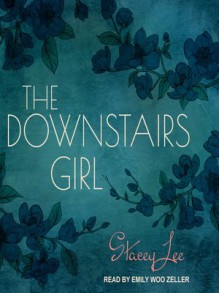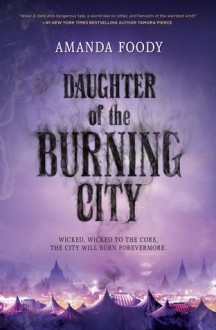

Jo Kuan is a 17-year-old Chinese-American girl in 1890 Atlanta. Jo and Old Gin secretly live below the Bell family's home/printing press. The secret chambers were built by abolitionists, and the Bells do not know they exist. Jo begins the story as a milliner's assistant, but loses that job early in the book. Jo accepts a job as a lady's maid, tending to the spoiled Caroline Payne, who is around Jo's age and used to be a sometimes friend/sometimes frenemy. Meanwhile, Jo hears through the "listening tube" left by the abolitionists that the Bells' newspaper, The Focus, needs a way to regain lost circulation. She comes up with the idea of writing an "Agony Aunt" type column called "Dear Miss Sweetie."
"Miss Sweetie" quickly becomes popular and increases subscriptions to the paper. Jo begins to tackle increasingly controversial topics, challenging racism and sexism, and thereby possibly making herself the target of readers who object.
At the same time, Jo attempts to solve the mysteries of her own parentage. According to Old Gin, she was abandoned on his doorstep when she was a newborn.
This was an enjoyable read. Jo is a likable, principled protagonist, and the author sneaks in a history lesson. She writes in her author's note:
Were you surprised to learn that planters shipped Chinese people to the South to replace the field slaves during Reconstruction? I was. Plantation owners envisioned an improved system of coerced labor, as Chinese workers were lauded as "fine specimens, bright and intelligent" (New Orleans Times, June 3, 1870). They were dismayed, however, when the Chinese behaved no differently from formerly enslaved blacks. The new workers were unwilling to withstand the terrible conditions and ran away to the cities, and sometimes vanished from the South altogether,
Was I surprised? You bet I was. I had no idea!

Sorina has spent most of her life working in the Gomorrah Festival, a city-sized traveling carnival, as the adopted daughter of the Festival's proprietor, Villiam. Although Sorina is the first known illusion-worker born in a hundred years and will eventually become the Festival's next proprietor, she doesn't feel particularly special. The blank areas of skin where her eyes should be mark her as a freak, even within Gomorrah. And although Villiam is kind and always finds time to talk to her, he doesn't seem to be putting serious effort into training her to be his successor. There is much Sorina still doesn't know about how Gomorrah works.
In addition to Villiam, her adopted father, and Kahina, Sorina's mother figure, Sorina has her other family members, her various illusions. Over the years, she has created several illusions so complex that they appear to almost be real people. Each of them was specifically designed to fulfill a role - Sorina's uncle, bossy older sister, annoying younger siblings, etc. - but each of them also acquired traits that Sorina didn't plan, special "freakish" abilities. They all add a bit of stability to Sorina's life, until one day she discovers something she hadn't thought possible: one of her illusions has been murdered.
Who would have killed an illusion? How did they manage it? Sorina doesn't know who to turn to. Should she trust Villiam, who believes that the killer is an outsider trying to harm him, the proprietor, through her? Or handsome Luca, who believes the killer is someone within the Gomorrah Festival?
I'll start off by saying that the only reason I listened to this was because I needed something I could use for my "Creepy Carnivals" square in Booklikes Halloween Bingo. Even just in the description, there were aspects of this book that didn't appeal to me. The entire setup sounded a bit ridiculous, for one thing, and Sorina's "family" reminded me too much of James Patterson and Michael Ledwidge's The Dangerous Days of Daniel X, a truly terribly YA book. I also rolled my eyes at the whole "first illusion-worker born in a hundred years" thing.
Daughter of the Burning City turned out to be both tedious and gross. I mean, I didn't like the whole "Sorina created nearly all of her friends and family members" aspect, but I didn't expect it to be quite as awful as it was. And the murder "investigation" was just a joke.
I was halfway through the book before anything resembling an on-page investigation started. Villiam swore he was doing a "full investigation," but I couldn't see how that could possibly be true considering that the victims were cleaned up and buried soon after their deaths. Sorina's investigation with Luca wasn't much better. Honestly, it seemed like they were randomly questioning people. I vaguely remember Luca saying something about Gomorrah residents with particularly special abilities (or more than one ability?) being more likely murderer candidates for some reason, but in practice it really just seemed like they were talking to people to fill the time and make Sorina feel like they were doing something useful.
I'll admit that I never figured out the killer's motive on my own, but the killer's identity was such a cliche that I managed to guess it about 15% in, and the oddities in their behavior just kept stacking up. I wasn't impressed at all with the murder mystery storyline.
The romance didn't start off well, but it gradually improved...until it suddenly became one of the top grossest YA romances I've read in a while.
When Sorina and Luca first met, there was some stereotypical "he's so good-looking, but he can't possibly be interested in a freak like me" stuff. Then Sorina learned that Luca was *gasp* not interested in sex. The character who initially told Sorina this said it like it was the most freakish thing she'd ever heard of, and Sorina herself seemed to have trouble wrapping her brain around the idea. After hearing this info about Luca from at least two separate people, Sorina had a conversation with Luca in which she declared the two of them friends, received a lukewarm response, and then decided to kiss him out of the blue. When he didn't respond favorably, she assumed it was at least partly due to her own freakish lack of eyes rather than the fact that she'd forced a kiss on him without his consent and with the knowledge that it might make him uncomfortable.
In a much shorter amount of time than I would have expected, Luca decided that he was okay with kissing Sorina. He explained that he needed to get to know a person before he could feel interested in them (demiromantic?). Considering that he'd also said that he'd never been put in this sort of position before and had never really thought about it, I wondered how he knew the exact words to describe all of this - his panicked confusion felt more real than his later explanation and his sudden willingness to passionately kiss Sorina.
I eventually adjusted to their romance, even though I wasn't a fan of the way it started. However, a revelation late in the book made it all skin-crawlingly gross. This is where I get into major spoiler territory.
At one point, Sorina learns that Luca is actually one of her illusions. Various machinations caused her to forget about his existence, and, if things had gone as planned, Sorina would never have met him again and they'd have lived entirely separate lives. But of course that didn't happen.
What I could not get past was that Sorina had created Luca. Foody tried to smooth this over via Luca telling Sorina that her more person-like illusions always had aspects of themselves she didn't expect. She'd never planned any of their "freakish" abilities, and many of them had private lives she was unaware of. Luca claimed that their romance was perfectly fine because he'd chosen to be with her. What Foody never addressed, however, was the fact that all of Sorina's illusions perfectly aligned with whatever role she'd assigned them to fulfill. Venera was her best friend, because that's what Sorina created her to be. Nicoleta seemed fine with being Sorina's "bossy older sister." And Luca, meanwhile, was created to be Sorina's lover. No, he didn't turn out quite as planned, but in the end he slid right into his assigned role just like all the others.
Was consent really possible in a situation like this?
Emily Woo Zeller's narration didn't improve my opinion of this book. She tended to sound overwrought, which I suppose fit Sorina well, but all this did was make Sorina grate on my nerves more. Her voices for the various male characters often sounded cartoonish, and I disliked Nicoleta in large part due to the waspish tone she used for her.
This wasn't a good book in the slightest, but at least it netted me the bingo square I needed, so that's something.
(Original review posted on A Library Girl's Familiar Diversions.)


Marie Kondo earnestly believes that the objects she possesses want more than anything to please her, and that thanking them for their service, as if they are military veterans returning from combat, keeps them happy. Silly girl. The inanimate objects despise you and are silently plotting against you! (See, I can do it, too, with the kooky anthropomorphizing.)
I realize that I missed the "Konmari" hype when this book first came out. This title popped up as an available audiobook in my library's e-collection, and it sparked my curiosity. Soon I realized, "Oh, THIS is what was being mocked on that one episode of The Simpsons.
Like many other readers, I started out interested in the premise that decluttering would be beneficial, but the further I got into the book, the more I recoiled from Kondo's rigid rules about sorting, discarding, and storing, and her weird relationship to inanimate objects.
Others have already made this connection, but Kondo reminds me of Adrian Monk, in the sense that she appears to have made OCD work for her career. It seems she is making it work for herself, but there were definitely parts of the book where I got the queasy impression that she legitimately shows signs of mental illness, with little to no self-awareness.
Here are my takeaways: Sort your stuff. Figure out what to keep (nope, I won't insist everything needs to "spark joy" in me--sometimes I just need things or find them useful). Find places for your things. Nope, not going to switch to folding all of my clothes and putting them into drawers or boxes. I am a hanger kind of girl. My clothes told me they're "hanger" girls, too, so it's okay! Nope, nope, nope on putting all the books on the floor and getting rid of some large percent of them. The books are fine, not making any noise, so I'll leave them as they are. No, I am not going to take things out of my purse every night, and put them each in their own special drawers and shelves for the night after thanking them. For one thing, I hate purses, and use a messenger bag unless I'm going to a fancy-dress event. For another, that's a stupid time-wasting ritual.
Don't waste your time with this book. But I seriously look forward to delving into the parody: The Joy of Leaving Your Sh*t All Over the Place: The Art of Being Messy.